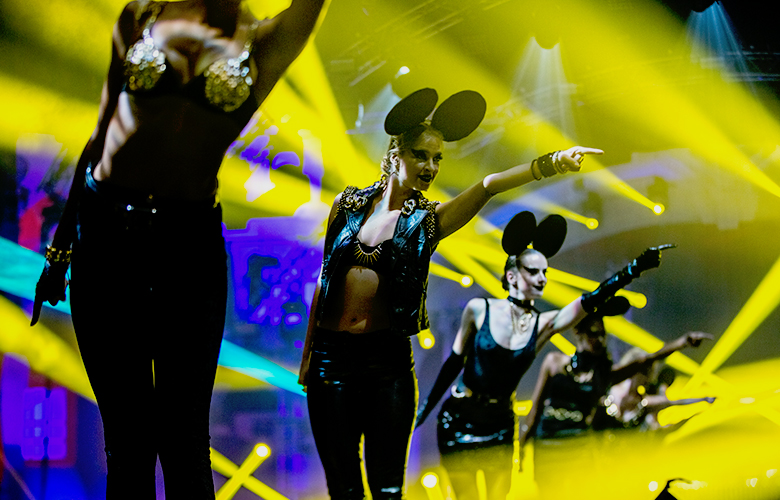
March was the celebration of this year’s Holi Festival. This colourful Indian celebration has become world-famous. Although the origin stories have changed over time, the festival mainly celebrates good over evil. Covering each other with colours has also grown to be an expression of love, which is done on the second day of the festival, Dhuleti.
Colours are great means for storytelling and have been for ages. From our daily life to marketing and entertainment, colours are used to describe feelings and imply meaning. These implications differ from culture to culture, change and develop through time. The same devout yellow of the Indian festival is seen as unethical in the term “yellow journalism” that gained popularity in the 1890s.
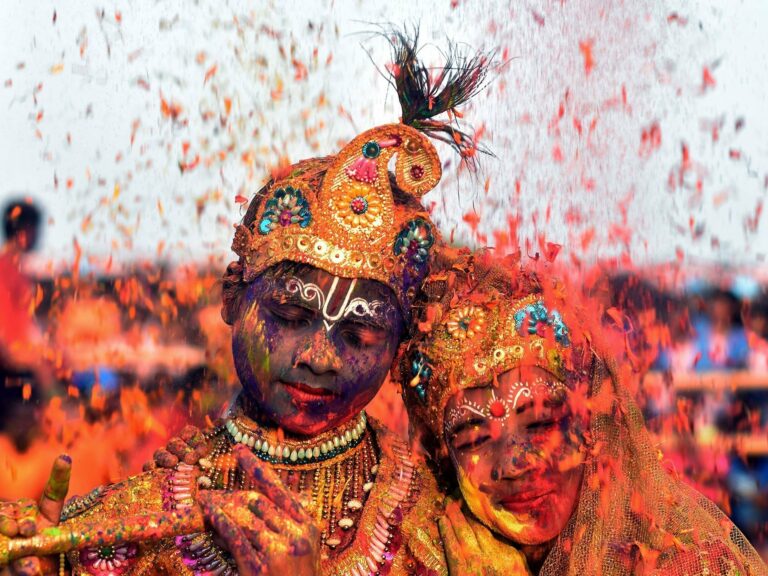
It seems safe to say that colours play a big role in our lives. Regardless of how individuals interpret colours, as showmakers we use them to communicate our story to our audience. In my experience, certain colours can be used to significantly enhance storytelling. From costumes to decor: the tools are there for us to use. Let me share how.
To understand colour as a means of storytelling, it helps to understand its relation to music. Now, let’s start at the very beginning. In the 17th century, Sir Isaac Newton – yes, who also discovered gravity – felt continuously inspired by nature. He got more and more interested in colours by watching rainbows immerse and dissolve. After thorough investigation, Newton decided on seven basic colours that we now have got ingrained in our perception of the rainbow: red, orange, yellow, green, blue, indigo, violet. So, why seven? It seems to be quite a random number, but there is nothing random about it.
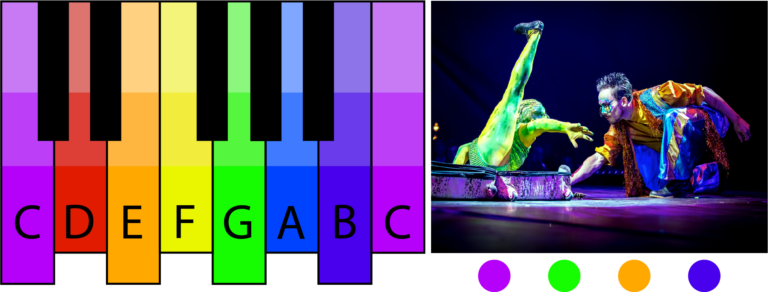
Newton was, actually, an avid music lover. This fondness of music lead him to discover a most curious connection. The seven common colours of the rainbow correspond to the seven notes on a basic major C scale, ranging from C (red) to B (violet). Newton examined if he could, literally, play with colours the way one does with musical notes. Some piano keys sound great together, creating a harmonious chord, while others contradict each other. A chord would then correspond to harmonious colour combinations (complementary colours) as well as discords (contrasting colours). As not all visual artists play piano, Newton created a visual representation of his findings: the colour wheel.
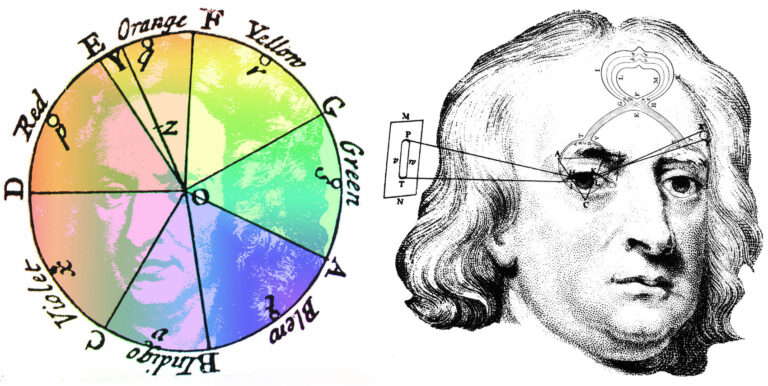
The notion that music can evoke strong emotions is well-known. With the knowledge of the close linkage between music and colour, the emotional impact of colour seems to exist as well. However, no matter how hard we try to generalise the impact of colours, its perception is subjective. Factors such as culture, age, past experiences, surrounding setting and even the state of our eyes influence our perception of colour. Still, although colours might indicate different meanings to different people, each colour does have several universal influences that we can use.
From the “rainbow seven”, yellow is the first colour our human eyes process. This makes yellow the most visible colour, for we can easily spot it from a distance. This also makes it an easy tool to use if you want to grab the audience’s attention. For this same reason “sale” stickers in shops are often made in yellow. During a live performance, yellow accents can be used to indicate important elements without making it too obvious. In moderate amounts, yellow is a great tool to get all eyes on the object of our choosing.
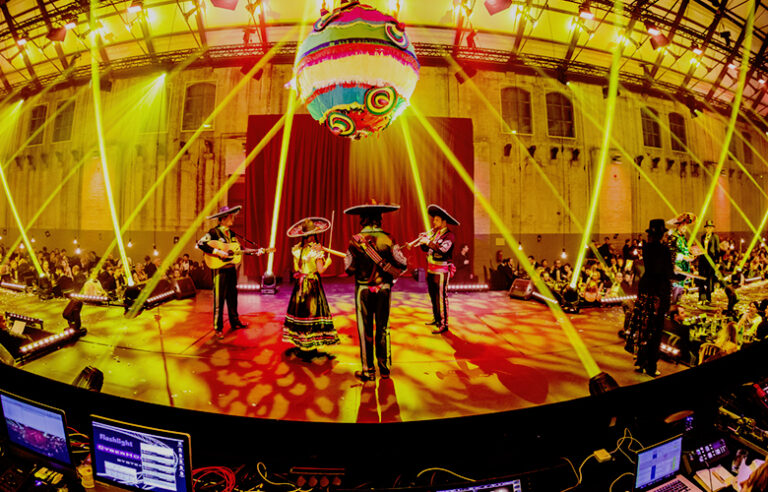
If we take a look at history, we will see that a bright and striking yellow often occurs as a sign of abnormality. For example, “yellow journalism” was seen as a common slur for news with inaccurate content that would use attention-grabbing headlines to increase sales. Simultaneously, around the world yellow is often associated with children and a new life. Now, how can these two notions possibly come together when creating a live show? Well, it makes yellow an excellent colour to introduce something new or different from the norm. This can be a new show element, but also a new product.
Since this colour catches our eye first, our bodies are used to immediately process this incoming information. It increases your heart rate and takes up energy, even if we barely notice it. At least, not in small quantities. In big amounts, the processing can get tiring, which is why people automatically have a tendency to “escape” it, which in return increases our energy level and encourages our bodies to move. This definitely comes in handy when you want the audience to be excited and curious about something new. Perhaps even rebellious…
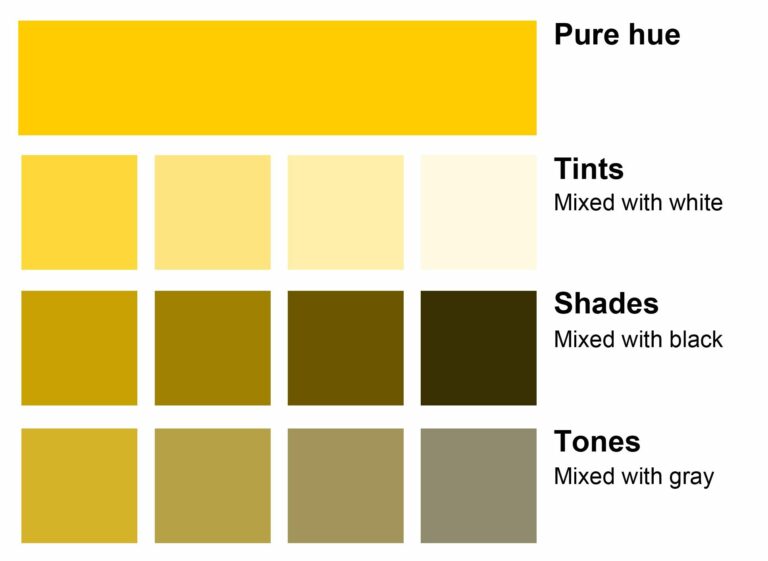
Just as any colour, yellow has many tints and tones. These are ways to downplay the highly saturated pure colour by adding white or grey. On stage, however, lighter tints might cause the yellow to disappear, while tones can render the use of yellow useless altogether. Shades of yellow, created by adding black into the mix, are much less common, for it immediately changes the colour into a rather unattractive green. Extensive use of the pure and saturated yellow, on the other hand, strains the audience. Imagine looking straight into the sun. It is most certainly a feeling you won’t enjoy for long. Taking into account the great power that stage lights possess, extensive use of highly saturated yellow is definitely not recommended.
Well, then what can you do? Yellow works great when mixed with other colours, such as variations of blue, red or pink. Tints close to the pure colour are rather pleasant to the eye as well. As long as we stay away from the acid yellow of the 80s. We’ve lived, learned and let’s move on.
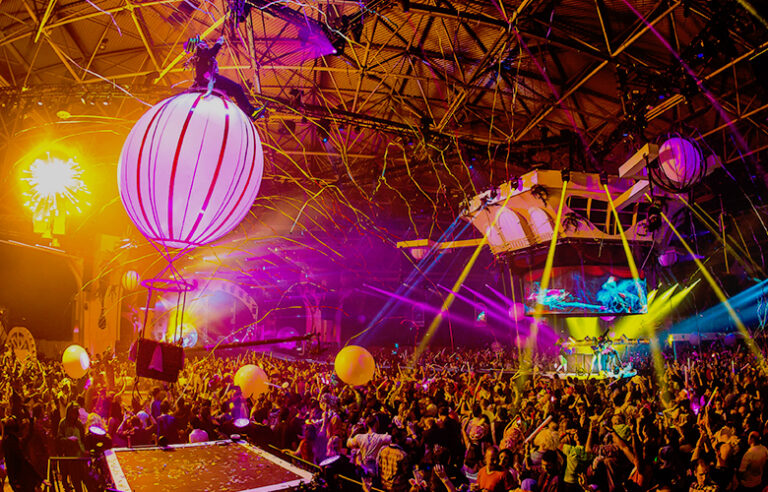
Storytelling and colour are intertwined: colours can be used to enhance certain elements, but also to tell a complete story by itself. Just as there are infinite colours, we can use them to tell infinite stories. The impact of colours remains subjective, no matter how hard we try to generalise their impact. Factors such as culture, age, and even the condition of our own eyes influences how we perceive colour. For this reason, as showmakers, we know never to downplay the importance of knowing one’s audience. Still, we can always steer our audience in the right direction if we know how to use our tools.
How To Make Your Creative Team Thrive
How To Use Music To Emotionally Move An Audience


Koen Colmbijn is a Dutch live-entertainment Director. He is a visionary emotion expert. A storyteller with a knack for (corporate) strategy. His passion is to touch people’s souls via theatrical concepts. During his 10 years of experience in the live entertainment industry he collaborated with industry leaders within different cultures such as Heineken, Board of Saudi Aramco, Booking.com, Volvo Ocean Race, ExxonMobil and The Walt Disney Company. Furthermore, he has produced inventive live shows for large corporate festivals, stadium shows, dinner experiences, ceremonies and well-known music festivals in Beijing, Shanghai, Tokyo, Seoul, Vancouver, Sochi, Cape Town, London, Berlin, and Amsterdam. He has worked with world renowned artists, from Yo-Yo Ma. Janine Jansen, National Ballet of the Netherlands & Michaela DePrince to Tiësto, Hardwell, Armin van Buuren and many more. Koen challenges himself and his dedicated team on a daily basis to beat the status quo in the international world of Live Entertainment.
Read Full Profile© 2021 TheatreArtLife. All rights reserved.

Thank you so much for reading, but you have now reached your free article limit for this month.
Our contributors are currently writing more articles for you to enjoy.
To keep reading, all you have to do is become a subscriber and then you can read unlimited articles anytime.
Your investment will help us continue to ignite connections across the globe in live entertainment and build this community for industry professionals.